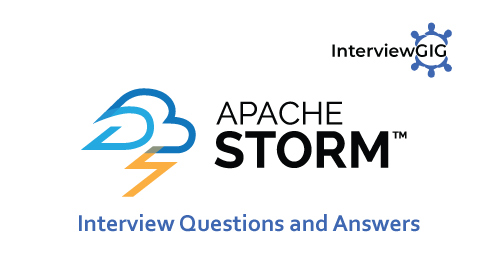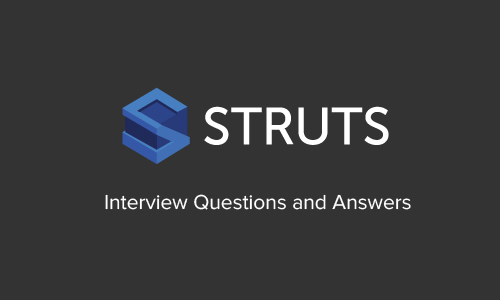What is Apache Solr?
Apache Solr is an open source search platform built upon a Java library called Lucene. Solr is a popular search platform for Web sites because it can index and search multiple sites and return recommendations for related content based on the search query’s taxonomy. Solr is also a popular search platform for enterprise search because it can be used to index and search documents and email attachments. Solr offers a rich, flexible set of features for search. To understand the extent of this flexibility, it’s helpful to begin with an overview of the steps and components involved in a Solr search.
What are the features of Apache Solr?
Apache Solr is a fast open-source Java search server.
- Optimized for High Volume Traffic
- JSON, XML, PHP, Ruby, Python, XSLT, Velocity and custom Java binary output formats over HTTP
- Advanced Full-Text Search Capabilities
- Highly Scalable and Fault Tolerant
- Flexible and Adaptable with easy configuration
- Near Real-Time Indexing
- Extensible Plugin Architecture
- Schema when you want, schemaless when you don’t
- Faceted Search and Filtering
- Geospatial Search
- Highly Configurable and User Extensible Caching
- Security built right in
- Advanced Storage Options
- Query Suggestions, Spelling and More
- Rich Document Parsing
- Standards Based Open Interfaces – XML and HTTP
- Comprehensive HTML Administration Interfaces
- Apache UIMA
- Multiple search indices
- Statistics and Aggregations
Can you explain the Solr Building Blocks?
The major building blocks of Apache Solr are:
Request Handler: This, we send to Apache Solr square measure processed by these request handlers. The requests might be question requests or index update requests. based on our requirement, we’d like to pick out the request handler. To pass a request to Solr, we are going to usually map the handler to a precise URI end-point and also the specified request will be served by it.
Search Component: It is a type (feature) of search provided in Apache Solr. It might be spell checking, query, faceting, hit highlighting, etc. These search components are registered as search handlers. Multiple components can be registered to a search handler.
Query Parser: This is parses the queries that we pass to Solr and verifies the queries for syntactical errors. After parsing the queries, it translates them to a format which Lucene understands.
Response Writer: in Apache Solr is the component which generates the formatted output for the user queries. Solr supports response formats such as XML, JSON, CSV, etc. We have different response writers for each type of response.
Analyzer/tokenizer: Lucene recognizes data in the form of tokens. Apache Solr analyzes the content, divides it into tokens, and passes these tokens to Lucene. An analyzer in Apache Solr examines the text of fields and generates a token stream. A tokenizer breaks the token stream prepared by the analyzer into tokens.
Update Request Processor: Whenever we send an update request to Apache Solr, the request is run through a set of plugins (signature, logging, indexing), collectively known as update request processor. This processor is responsible for modifications such as dropping a field, adding a field, etc.
Can you define Apache Lucene?
Supported by Apache Software Foundation, Apache Lucene is a free, open-source, high-performance text search engine library written in Java by Doug Cutting. Lucence facilitates full-featured searching, highlighting, indexing and spellchecking of documents in various formats like MS Office docs, HTML, PDF, text docs and others.
Can you define Highlighting?
Highlighting Is nothing but the Fragmentation of documents corresponding to the user’s query that is included in the Query response. Afterwards, these fragments are displayed and placed in the special segment that is used by the users and clients to present the snippets. The Solr contains a number of highlighting utilities and has control over various fields. The highlighting utilities can be called by Handlers of Request and can be reused with the standard query parsers.
Explain what file contains configuration for data directory?
Solrconfig.xml file contains configuration for data directory. The most common elements in solrconfig.xml are:
- Search components
- Cache parameters
- Data directory location
- Request handlers
What are the different types of query paramaters?
Below are some of query parameters available in Apache Solr:
q: This is the main query parameter of Apache Solr, documents are scored by their similarity to terms in this parameter.
fq: This parameter represents the filter query of Apache Solr the restricts the result set to documents matching this filter.
start: The start parameter represents the starting offsets for a page results the default value of this parameter is 0.
rows: This parameter represents the number of the documents that are to be retrieved per page. The default value of this parameter is 10.
sort: This parameter specifies the list of fields, separated by commas, based on which the results of the query is to be sorted.
fl: This parameter specifies the list of the fields to return for each document in the result set.
wt: This parameter represents the type of the response writer we wanted to view the result.
Which command is used to see how to use the Bin/solr Script?
Execute below command to see how to use the bin/Solr script.
$ bin/Solr –help
Can you define SolrCloud?
Apache Solr includes the ability to set up a cluster of Solr servers that combines fault tolerance and high availability is Called SolrCloud, these capabilities provide distributed indexing and search capabilities and the following features:
- Central configuration for the entire cluster
- Automatic load balancing and fail-over for queries
- ZooKeeper integration for cluster coordination and configuration.
In other term SolrCloud is flexible distributed search and indexing, without a master node to allocate nodes, shards and replicas. Instead, Solr uses ZooKeeper to manage these locations, depending on configuration files and schemas. Documents can be sent to any server and ZooKeeper will figure it out:)
Which command is used to start Solr in foreground?
bin/solr start –f is used to start Solr in foreground.
How to check whether Solr is currently running or not?
Execute below command is used to check Solr running status.
bin/solr status
Can you define request handler?
When a user runs a search in Solr, the search query is processed by a request handler. SolrRequestHandler is a Solr Plugin, which illustrates the logic to be executed for any request. Solrconfig.xml file comprises several handlers (containing a number of instances of the same Solr Request Handler class having different configurations).
Which syntax is used to stop Solr?
Below command is used to stop Solr
bin/solr stop -p 8983
Can you explain Tokenizer?
The Tokenizer is used to break a stream of text into a series of Tokens, where each Token is an arrangement of characters in the text. The Token that is developed is then passed to the Token Filters which can update, remove and add the Tokens. Afterwards, that field is indexed by the resulting Token stream.
What are the pros and cons of standard query parser?
Also known as Lucence Parser, the Solr standard query parser enables users to specify precise queries through a robust syntax. However, the parser’s syntax is vulnerable to many syntax errors unlike other error-free query parsers like DisMax parser
Can you explain Faceting in Solr?
The Faceting refers to the categorization and arrangement of all search results that depends upon the index terms. The Faceting process makes the searching task more fluent as the users search for the exact results.
Can you explain Dynamic Fields?
If the user forgets to define one or more fields, then the Dynamic Fields are a useful feature. They offer excellent flexibility to index fields that is not explicitly defined in the schema.
Can you define copying field?
It is used to describe how to populate fields with data copied from another field.
Can you define phonetic filter?
Apache Solr facilitates fault-tolerant, high-scalable searching capabilities that enable users to set up a highly-available cluster of Solr servers. These capabilities are well revered as SolrCloud.
How to install Solr?
The three steps of Installation are:
Server-related files, e.g. Tomcat or start.jar (Jetty)
Solr webapp as a .war
Solr Home which comprises the data directory and configuration files
What data is specified by Schema?
Schema declares:
- How to index and search each field
- What kinds of fields are available?
- What fields are required?
- What field should be used as the unique/primary key?
Give the syntax to start the server?
$ bin/solr start is used to start the server.
How to shut down apache solr?
Solr is shut down from the same terminal where it was launched. Click Ctrl+C to shut it down.





